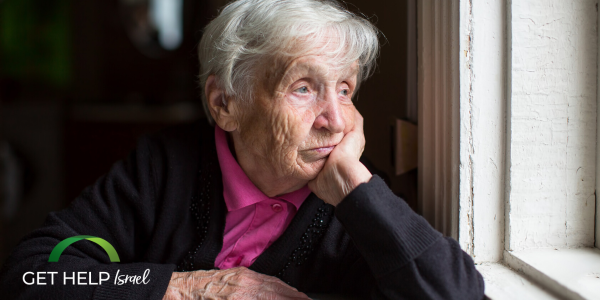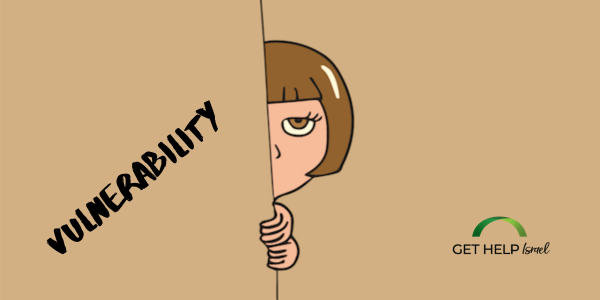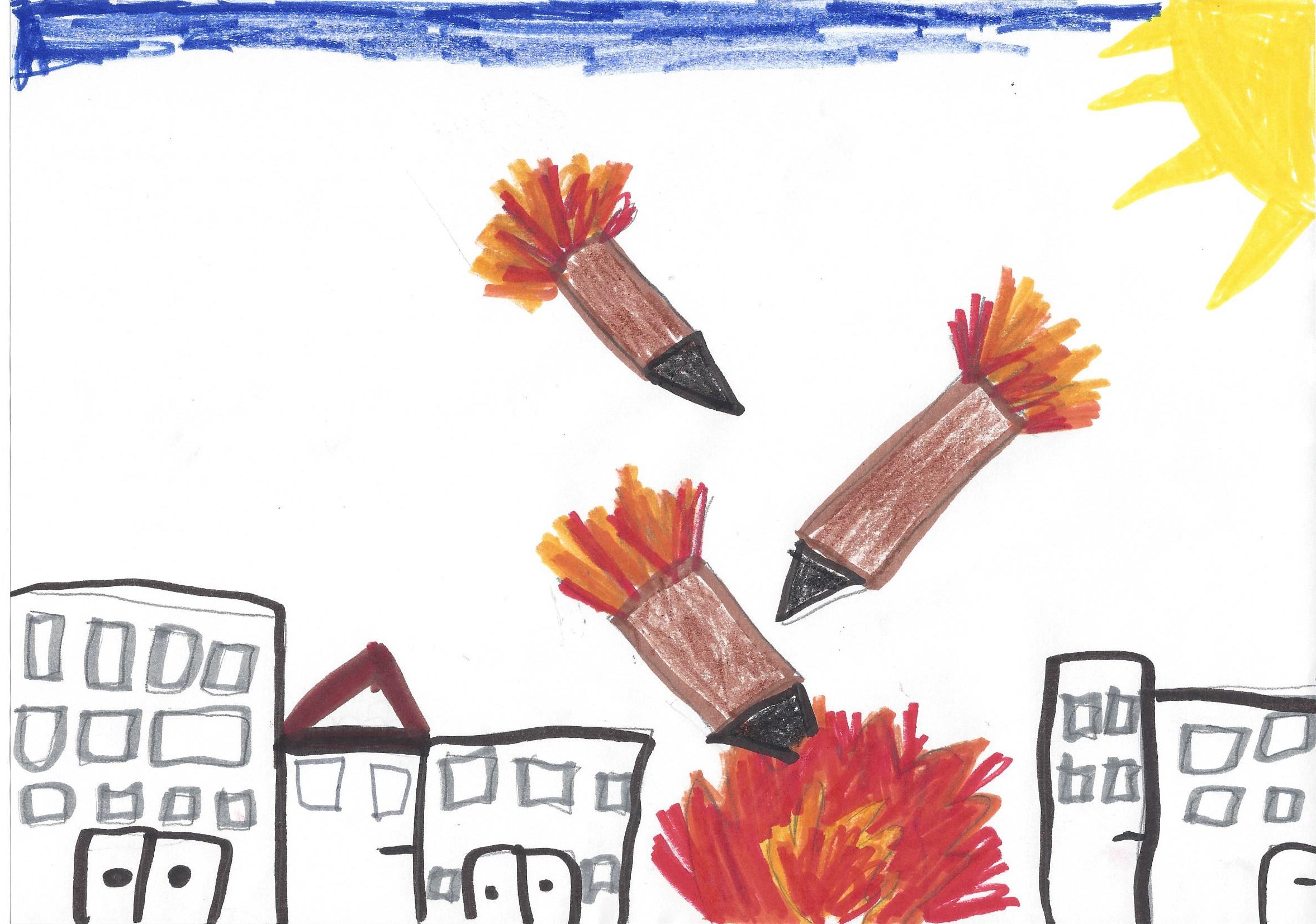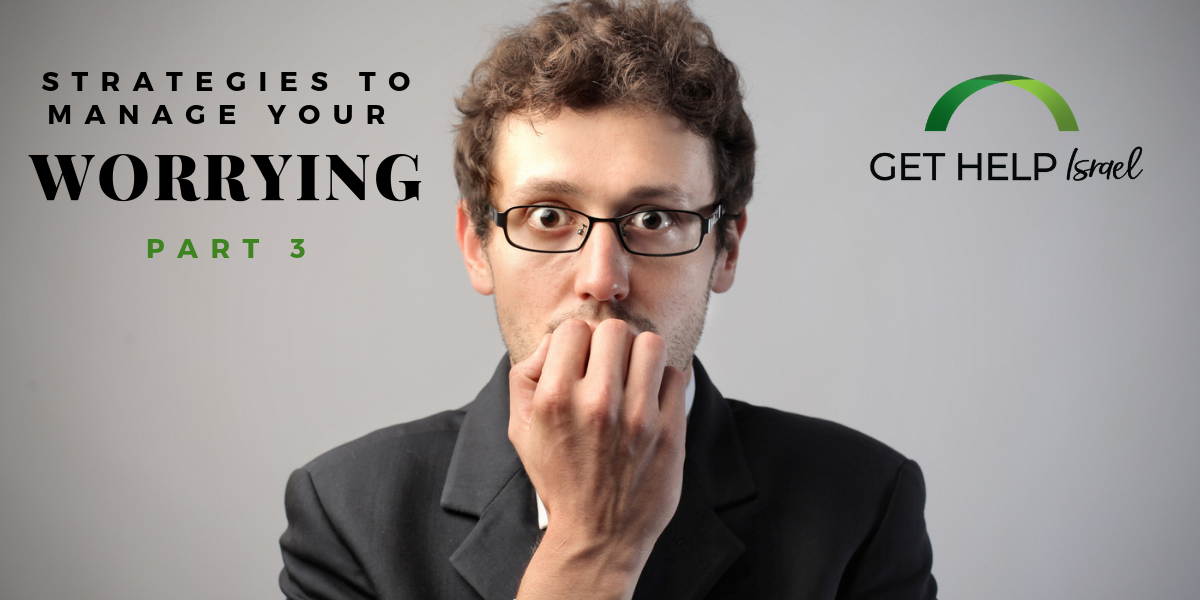The GHI Fund proudly support soldiers, lone soldiers, and active reservists in funding trauma therapy via private practice multilingual therapists to provide imminent specialized care. Soldiers can select their own therapist through our database of participating therapists.

Caregiving in the Time of Quarantine
By: Jeanne LankinHow can we as caregivers of elderly relatives, whether they are local or across the world, navigate the realities of this pandemic? How do we adjust to this “new normal” in our lives with responsibilities as adult children to our elderly loved ones? How can we cope with the inevitable guilt that arises from not being able to fully meet our family’s needs during this time of crisis?
Read More
Vulnerability Just Ahead
By: Nancy SchwartzIs feeling vulnerable a good thing? Many of us see it as a sign of weakness, as we’re not being good enough!! We’re afraid of not being seen by others as the “perfect” mother/father, spouse, child, worker, etc.
Read More
Back To School With ADHD
By: Linda AvitanAdvice to parents who face particular challenges around back-to-school among children with ADHD. Suggestions are offered in the context of common challenges such as difficulties with lack of routine, learning new habits and impulsivity. I invite parents to consult with me to examine ways to understand what's behind certain behaviors and build strategies, smoothing the way for better coping.
Read More.png)
Cultivating Self-Care
By: Esther Avital GottesmanIn its most general sense, self-care is often equated with self-pampering. Given this notion, it can be seen as selfish. However, that idea is mistaken.
Read More
Fundamentals of Trauma Recovery, Part 5
By: Chava LedererIf you feel ashamed in relation to any part of your trauma, you deserve to connect with others and experience the relief that comes with dissipating shame.
Read More
Fundamentals of Trauma Recovery, Part 6
By: Chava LedererIn building muscle, you will literally build your container to bear it all. When your container is fortified, recovery will be easier.
Read More.png)
New Job Jitters
By: Sasha WeissWhen beginning a new job if you are constantly worried about failing and feeling like you need to prove yourself at every turn that can cause significant stress which will most likely hinder performance. Rather than engendering positive relationships and being open to learning, the fear of someone discovering shortcomings will be so pervasive that it will be very difficult to acclimate to the new position effectively. On the other hand, a growth mindset which encourages you to learn from others, think about mistakes as essential to the process of learning and acclimating and being open to a new way of doing things will lead you to have more joy and energy, feel less anxious, and make a good impression on your colleagues.
Read More
Get Grounded With Art
By: Yannah PopovitzCreative expression can be a soothing and releasing form of self care and help us find our anchor.
Read More.png)
Resilience Series Part 3
By: Esther Adams AharonyIn the previous blog, we discussed strategies to manage our emotional reactivity. Although similar, regulating emotions isn’t quite the same as managing how we react emotionally. Whereas managing emotional reactivity works like a light switch that can dim the frequency and intensity of our emotional reactions, regulating emotions, on the other hand, involves altering our emotional responses to situations. We might consider regulating emotions as our ability to adjust our own emotional states. Sometimes we do this by increasing our positive emotions, whereas other situations are better handled by decreasing our negative emotions. How...
Read More.png)
Bagruyot Testing Accommodations for Olim
By: Michael RothThe primary focus here will be on accommodations for the Israeli Bagruyot. Providing accommodations at the Elementary school level is usually at the discretion of the school based upon psycho-educational testing. The Elementary school is not obligated in any way to provide the recommended accommodations and likewise can decide to allow them without a specific recommendation. There is no regulatory body regarding testing accommodations at the Elementary level.
Read More
Earth, Water, Air, and Fire
By: Chava LedererThe four classical elements are channels through which we make contact with the present moment reality, and engage our uniquely human mind – a mind capable of creativity, of connecting to others, of faith and spirituality. I offer you these four elements as resources in moments of stress, panic, fear, or any other overwhelming experience.
Read More.png)
My Journey Through Chronic Pain: A Personal and Professional Story of Healing
By: Tzipora HaitPhysical pain in the body that is produced by our brain is identical, whether there is an actual structural injury in the body or whether the brain mistakenly believes there is a structural injury in the body. To offer an analogy, a smoke alarm that sounds because it is broken makes the exact loud and very real noise as a smoke alarm that sounds because there is smoke from an actual fire.
Read More
The Wondrous “Black Sheep”: the Truth Teller of a Family
By: Keren BurgmanHow often have you heard someone describing their family and either talking about a sibling…
Read More.png)
4 Ways NOT to Apologize to Your Spouse
By: Yonatan SchechterCouples occupy the same spaces, literally and figuratively, and it’s inevitable that they will clash or disappoint each other from time to time. When that happens, an apology is a major part of making amends. Here are some of the most common mistakes made when apologizing.
Read More
10 Ways to Improve a Marriage
By: Naomi SternbergWouldn’t it be wonderful if there were just 10 do it yourself fix it solutions…
Read More
How to Emotionally Support Children During Challenging Times – Speaking to your children about recent rocket attacks in Israel
By: Sara FeinbergFollowing the recent rocket attacks, many parents have asked me how best to respond to their children and help them manage their concerns and fears. Just as we have all heard the booms and seen the news reports, our children too are well aware of what is happening. As parents it is our job to support them through these difficult times. Here are some recommendations that can help.
Read More
Fundamentals of Trauma Recovery, Part 7
By: Chava LedererFinding meaning, creating purpose, and gaining control is a recipe that results in greater resilience and fuller recovery.
Read More.png)
On Today's Menu: Corona Sandwich
By: Jeanne LankinI am overwhelmed with guilt as I can’t be with my parents on a daily basis to help them navigate this challenging time in their lives. At the same time, I also feel guilty that I can’t help my kids while they struggle in raising their children and I can’t be there to help babysit or just spend time with them. I miss my grandchildren and virtual visits just aren’t doing it for me or them anymore.”
Read More
Fundamentals of Trauma Recovery, Part 3
By: Chava LedererWhile extremely distressing, flashbacks are actually memories. Registering what is a memory, and what is happening now, is essential.
Read More
Ways to Manage Worry Instead of it Managing You – Part THREE
By: Daniel BaumWorry! Ways to Manage Worry Instead of it Managing You
Part Three
Strategies to Help you Manage your Worrying
I am glad you are back again to read the final part of my blog Worry! Ways to Manage Worry Instead of it Managing You. In part three of my blog I will give you some specific strategies to help you manage your worrying.
Here are some specific strategies and tools that can help you avoid toxic worry. Let’s get to it shall we!
Hallowell’s Strategies of Managing Worry


